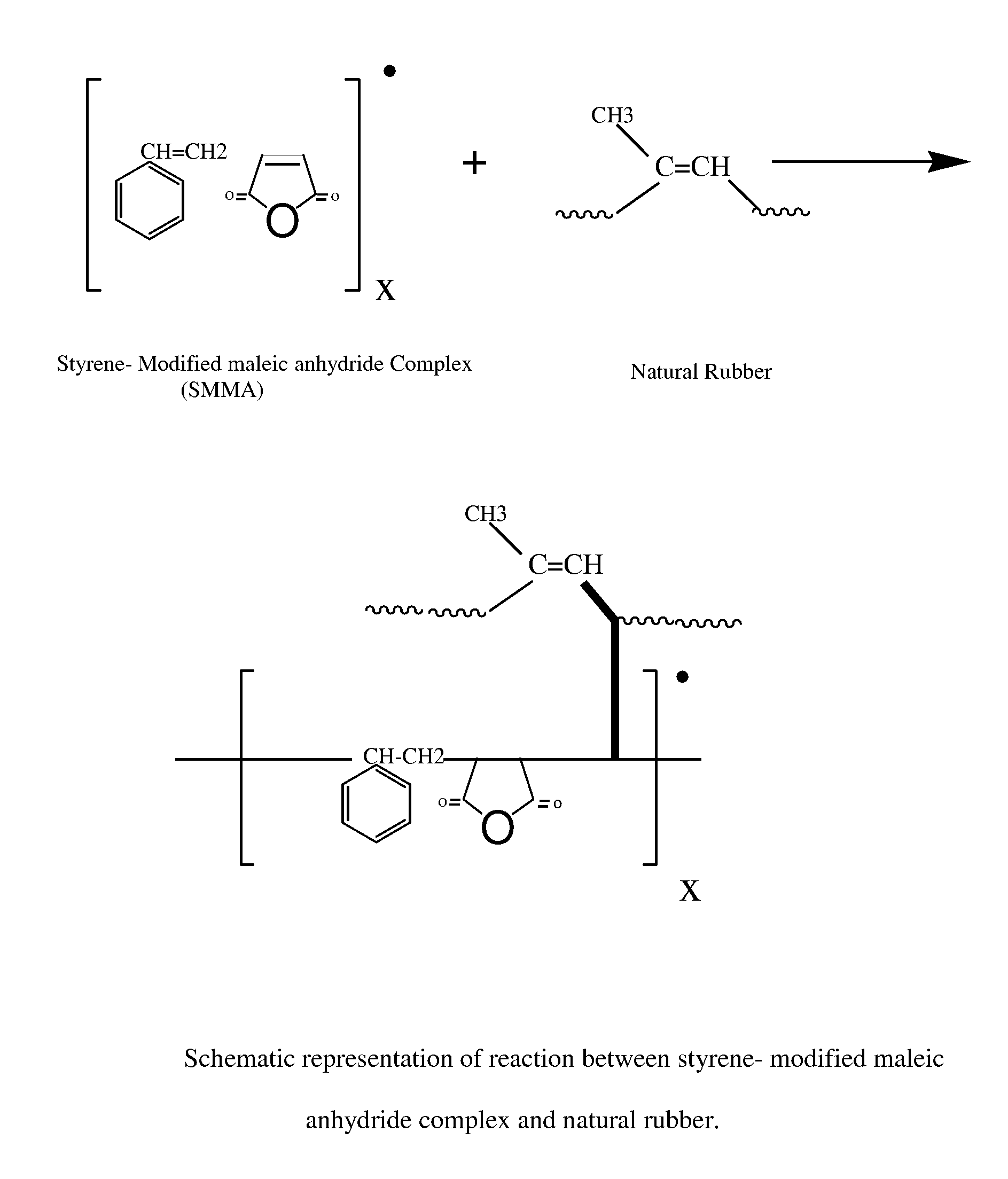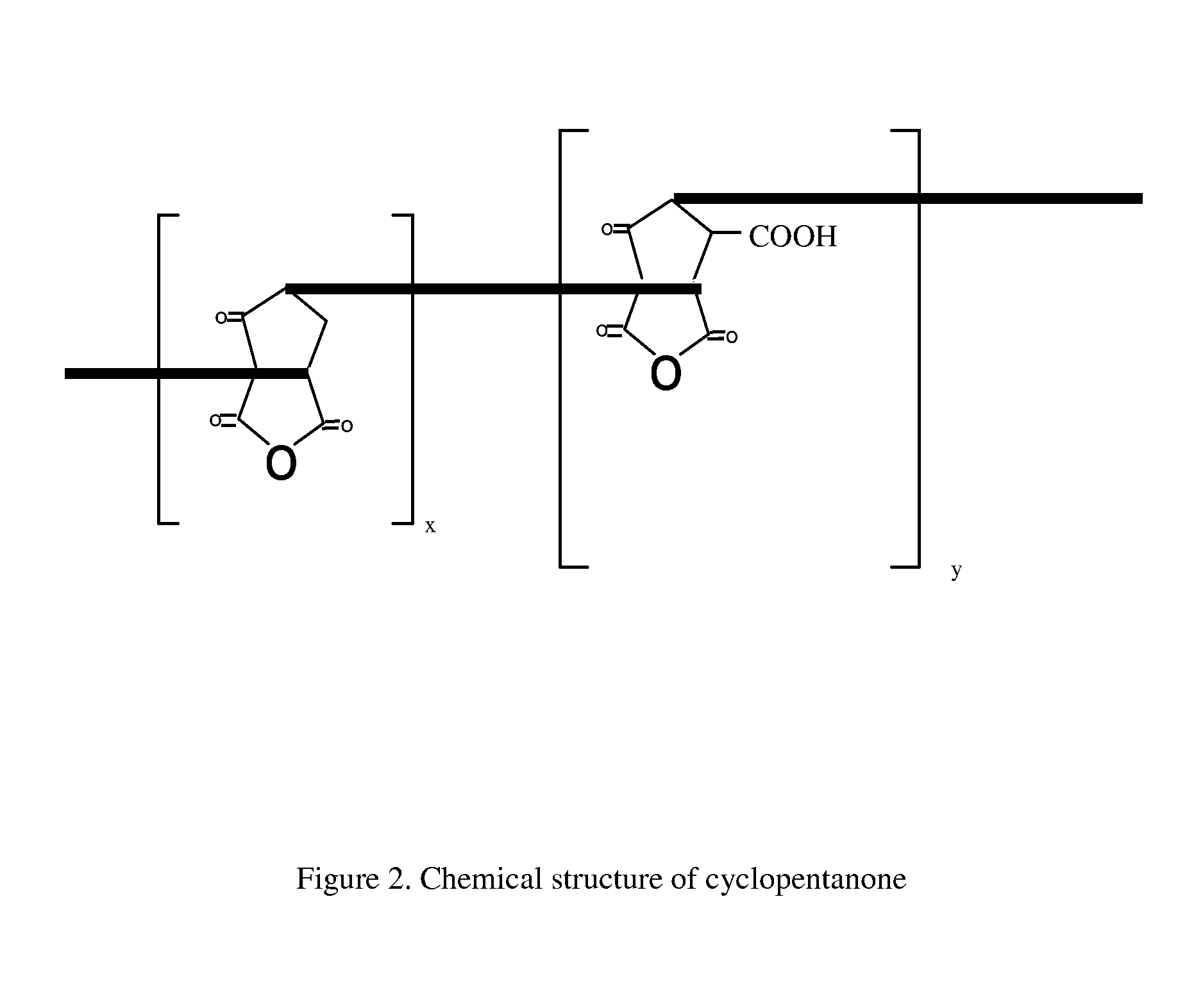Polymers for bitumen modification & other uses
a technology of bitumen modification and polymer, which is applied in the field of polymer chemistry, can solve the problems of care and attention, the inability to call ideal, and the inability to achieve ideal thermosetting polymer use, and achieve the effect of better thermal stability
- Summary
- Abstract
- Description
- Claims
- Application Information
AI Technical Summary
Benefits of technology
Problems solved by technology
Method used
Image
Examples
example 1
[0038]A mixture of 1 gram of maleic anhydride, 0.5 gram of benzoyl peroxide and 100 gram of Toluene were charged to a 250 cc multiple-neck round bottom flask equipped with a stirrer, thermometer, condenser and nitrogen inlet. With constant agitation, the mixture was heated to 120° C. under nitrogen sweeping. The mixture was held at this temperature for five hours. Then it is cooled to room temperature and 20 grams of styrene was added to the flask and the mixing was continued for one hour. At the end, 0.1 gram of 3-mercaptopropionic acid was added and mixed for further one hour at room temperature. This solution is called as “Solution A”. While 100 grams of natural rubber (pale creep) which were rolled for 30 minutes at 50° C. was dissolved in 200 grams of toluene at 60° C. in a one liter reactor which was equipped with a mechanical stirrer, thermometer, reflux condenser, addition funnels. The “Solution A” was added over two hours to the reactor and mixed with rubber. The mixture wa...
example 2
[0043]In examples 2, the natural rubber of example 1 is replaced with ethylene-propylene-diene monomer (EPDM). The resulting polymer (referred as polymer 2) can be used for absorption of contaminants like oil from water. It behaves like a smart particle when immersed in a mixture of oil and water. It absorbs oil and remains on the surface of the water. Also they can be used whenever EPDM with low meting point and low tensile strength is required.
[0044]The TGA of the resulting polymer 2 shows that it lost only 5% of its weight at 300° C. (FIG. 14) and shows better heat stability compare to the pure EPDM (FIG. 15).
[0045]FIG. 16 showing the DSC of the novel polymer 2, in temperature range of zero to 200° C. Novel polymer 2 has melting point of 90° C. (FIG. 16) and FIG. 17 illustrates the DSC of the novel polymer 2, in temperature range of −100 to zero ° C., and its glass transition temperature (Tg) is −45.57° C. (FIG. 17).
[0046]DSC of the novel polymer 2 with pure EPDM rubber was compa...
PUM
| Property | Measurement | Unit |
|---|---|---|
| tensile strength | aaaaa | aaaaa |
| temperature | aaaaa | aaaaa |
| temperature | aaaaa | aaaaa |
Abstract
Description
Claims
Application Information
 Login to View More
Login to View More - R&D
- Intellectual Property
- Life Sciences
- Materials
- Tech Scout
- Unparalleled Data Quality
- Higher Quality Content
- 60% Fewer Hallucinations
Browse by: Latest US Patents, China's latest patents, Technical Efficacy Thesaurus, Application Domain, Technology Topic, Popular Technical Reports.
© 2025 PatSnap. All rights reserved.Legal|Privacy policy|Modern Slavery Act Transparency Statement|Sitemap|About US| Contact US: help@patsnap.com



